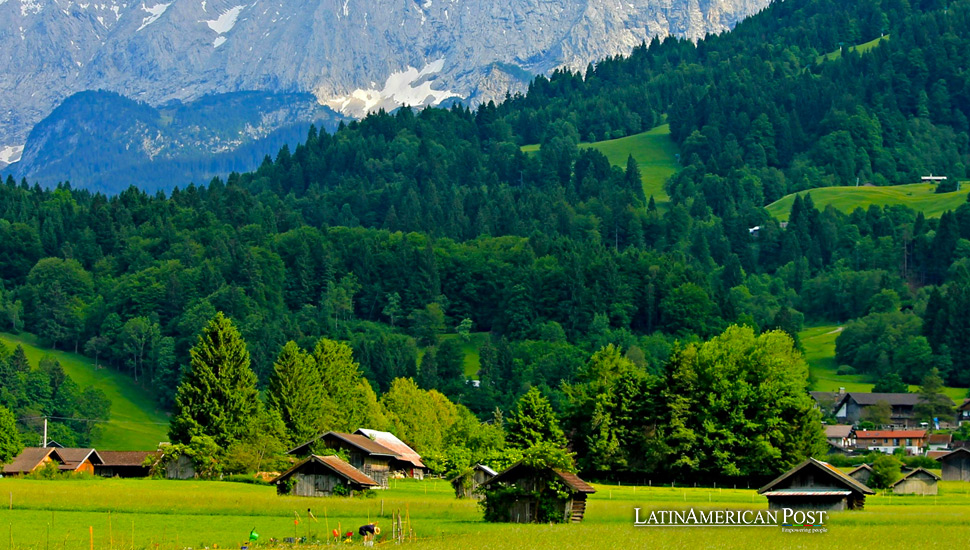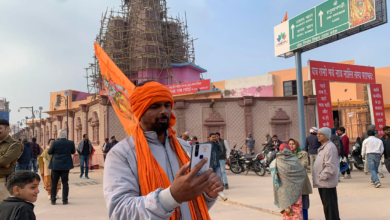Latin America’s Eco-Villages Becoming Beacon of Sustainable Living

From the verdant rainforests of Costa Rica to the diverse landscapes across Latin America, eco-villages are emerging as sanctuaries of sustainability. These communities are at the forefront of blending traditional knowledge with innovative practices to foster a symbiotic relationship with nature, showcasing a commitment to environmental stewardship, social cohesion, and economic resilience. This feature embarks on a journey through Latin America’s eco-villages, illuminating their role in pioneering a sustainable future amidst the global environmental crisis.
Eco-villages, intentional communities designed around sustainability principles, are becoming a beacon of hope in our fight to address our planet’s pressing environmental challenges. These communities, characterized by collaborative living, ecological consciousness, and innovative practices, offer a glimpse into a future where humans and nature can thrive in harmony. While Costa Rica has garnered international recognition for its pioneering eco-village movement, similar initiatives are blossoming across Latin America, each adding its unique flavor and perspective to this global movement.
Costa Rica’s Eco-Village Movement
Costa Rica, synonymous with stunning natural beauty and a relentless pursuit of environmental sustainability, provides fertile ground for the eco-village movement. La Ecovilla, nestled in the foothills of the Central Volcanic Range, embodies the core principles of this movement. This community, featured in the popular Netflix show “Down to Earth,” prioritizes organic farming, renewable energy production, and fostering a strong sense of community. Residents collaborate on daily tasks, from tending vegetable gardens to sharing meals prepared in communal kitchens. The community prioritizes responsible land use by minimizing its ecological footprint through composting and rainwater harvesting.
Further north, nestled in the Guanacaste province, lies Pachamama Eco-Village. This community exemplifies a deep commitment to environmental responsibility. They actively engage in reforestation efforts, restoring the ecological balance of their surroundings. Pachamama utilizes permaculture principles, a design system mimicking natural ecosystems, to cultivate diverse and productive gardens. Residents practice responsible water management through rainwater collection and greywater systems, minimizing their reliance on freshwater resources.
However, navigating a path toward sustainability has its challenges. Costa Rican eco-villages face hurdles such as legal complexities in securing land rights, navigating bureaucratic processes, and ensuring long-term financial stability. Despite these challenges, Costa Rica’s eco-villages remain a testament to the power of community and innovation in forging a more sustainable future.
Expansion Across Latin America
Beyond Costa Rica, Latin American countries embrace the eco-village concept, adapting it to their diverse landscapes and cultural contexts. In Colombia, Medellin’s “Aldea Ecologica El Refugio” offers a vibrant example. This community, nestled in the Andean foothills, prioritizes social inclusion and sustainable development. Residents practice urban agriculture, utilizing vacant plots within the city to cultivate organic produce and promote food security within their neighborhood. Additionally, El Refugio fosters community engagement through educational workshops, cultural events, and collaborative projects to revitalize their urban environment.
Ecuador, known for its rich biodiversity and indigenous traditions, also boasts thriving eco-villages. In the Amazon rainforest, the “Comunidad Mushuk Llacta” (meaning “New Town” in Kichwa) exemplifies the integration of traditional knowledge with modern sustainability practices. Established in 1990, this indigenous community implements ancestral agricultural practices while adopting renewable energy technologies like solar panels and biodigesters. This unique blend of knowledge fosters environmental stewardship while preserving the cultural heritage of the Kichwa people.
With its vast deserts and ancient civilizations, Mexico has also seen the rise of eco-villages. In Baja California Sur, the “Eco-Aldea El Cardonal” stands tall in the arid landscape. This community prioritizes water conservation through rainwater harvesting and efficient irrigation systems. They utilize greywater systems to minimize water waste and promote the use of drought-resistant plants in their gardens. El Cardonal also embraces alternative energy solutions, with many residents relying on solar panels to power their homes.
Brazil, the largest country in South America, boasts a diverse eco-village movement. “Floresta Azul” (meaning “Blue Forest” in Portuguese) in Bahia, established in 1991, prioritizes sustainable forestry practices. This community manages a 700-hectare reserve, reforesting degraded land with native tree species. Floresta Azul also embraces alternative income generation through ecotourism, immersing visitors into their sustainable lifestyle and the surrounding rainforest ecosystem.
The Role of Traditional Knowledge
Across Latin America, eco-villages increasingly incorporate indigenous and traditional knowledge into their sustainability practices. This integration fosters a deeper understanding of the local environment and promotes cultural preservation. In Colombia, the “Jatun Sacha” (“Great Forest” in Quechua) eco-village in the Amazon rainforest collaborates with indigenous communities to learn traditional agricultural techniques and medicinal plant uses. This knowledge contributes to the development of sustainable practices that are ecologically adapted and culturally respectful. Similarly, Ecuador’s “Pachamama Eco-Village” works closely with the Kichwa people, incorporating their wisdom in managing water resources and fostering harmonious relationships with the natural world.
Innovations in Sustainability
Latin American eco-villages are at the forefront of developing innovative solutions to address environmental challenges. In Brazil, the “Instituto Terra” (Land Institute) in the Amazon rainforest has pioneered bioconstruction techniques using local materials like bamboo and earth. These sustainable construction methods minimize environmental impact while providing durable and aesthetically pleasing structures. In Mexico, “El Cardonal” utilizes aquaponics, a combined system of aquaculture and hydroponics, to grow vegetables and raise fish simultaneously. This innovative approach reduces water consumption and promotes efficient resource utilization.
Technology also plays a crucial role in advancing the sustainability goals of these communities. In Colombia, “El Refugio” utilizes a community solar power system, enabling residents to share renewable energy and reduce their reliance on the national grid. Additionally, many eco-villages use online platforms to connect with potential volunteers, exchange knowledge with other communities, and promote their sustainable practices to a global audience.
Social and Economic Impacts
Eco-villages across Latin America foster strong social dynamics and unique governance models. Many communities, like “La Ecovilla” in Costa Rica, operate through consensus-based decision-making, encouraging participation and collective ownership of community affairs. Conflict resolution often relies on facilitated dialogue and mediation, promoting peaceful and inclusive solutions. Additionally, these communities foster a strong sense of community spirit through shared meals, cultural events, and collaborative work projects.
Economically, eco-villages contribute to local economies in various ways. “Floresta Azul” in Brazil generates income through ecotourism, offering visitors guided hikes, workshops on sustainable living, and opportunities to experience the unique ecosystem. In Ecuador, “Comunidad Mushuk Llacta” sells organic produce at local markets, contributing to local food security and creating economic opportunities for the community. Additionally, many community residents engage in artisan crafts, utilizing local materials and traditional skills to generate income and preserve cultural heritage.
Challenges and Future Directions
Despite their potential, eco-villages across Latin America face several challenges. Securing land rights remains a significant obstacle, particularly for communities on disputed or untitled land. Additionally, navigating environmental threats like deforestation and climate change requires ongoing adaptation and resilience. The scalability of these models to larger populations and their potential integration into mainstream society are also ongoing discussions within the movement.
Looking ahead, the future of the eco-village movement in Latin America appears promising. As environmental concerns continue to rise, these communities are projected to attract individuals seeking alternative lifestyles and sustainable solutions. Furthermore, collaboration and knowledge sharing between eco-villages across borders can strengthen their collective impact and contribute to developing regional policy frameworks that support sustainable living practices.
Also read: The Silent War: The Perilous Path of Latin America’s Environmental Guardians
Latin America’s eco-villages offer valuable lessons for the world. Their commitment to sustainability, community building, and innovation serves as a beacon of hope, demonstrating the potential for humans to coexist in harmony with nature. By fostering collaboration, embracing diverse knowledge systems, and harnessing the power of innovation, these communities pave the way for a more sustainable future for all. As we navigate the complex environmental challenges of the 21st century, the stories and practices of eco-villages across Latin America remind us of the power of collective action, the importance of respecting the natural world, and the potential for a future where humans and nature can thrive side by side.





